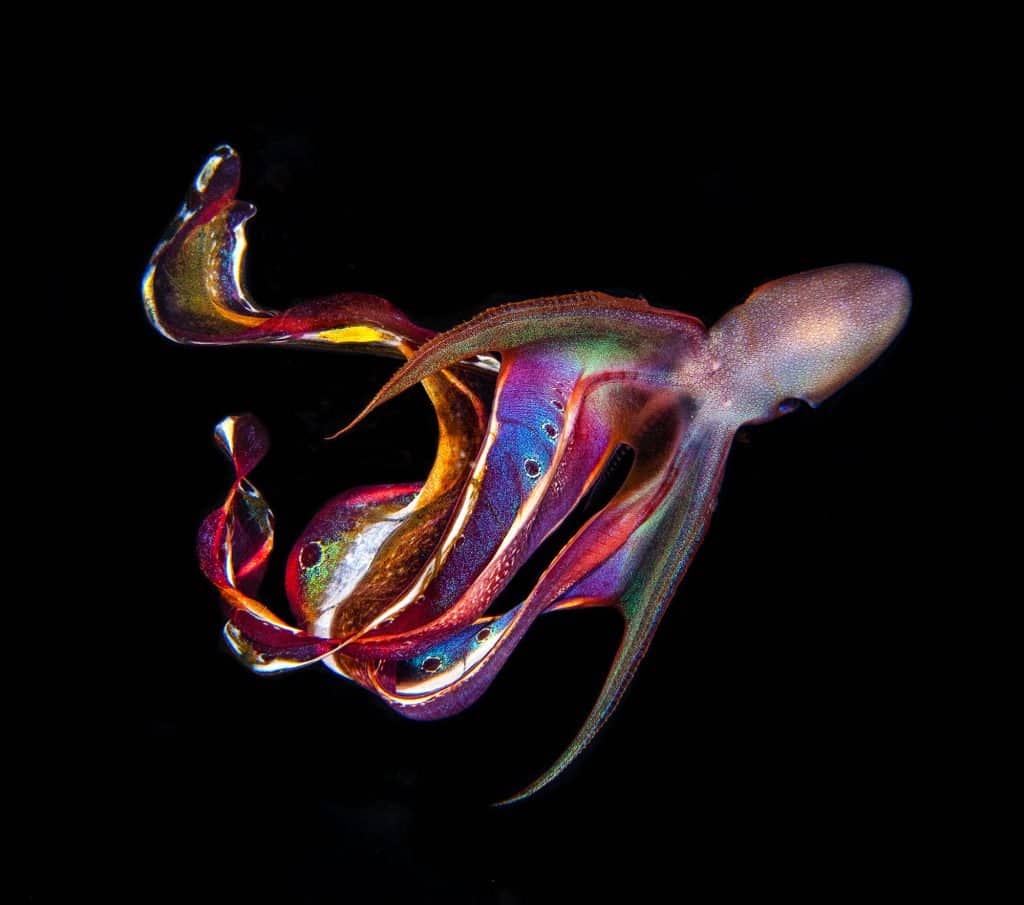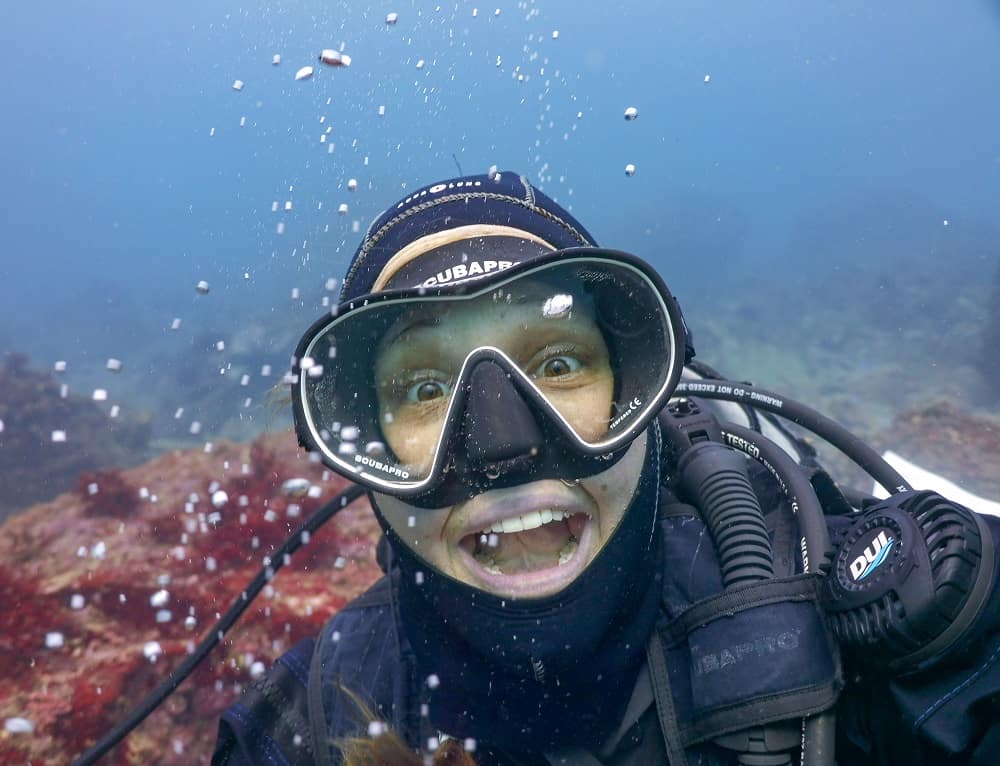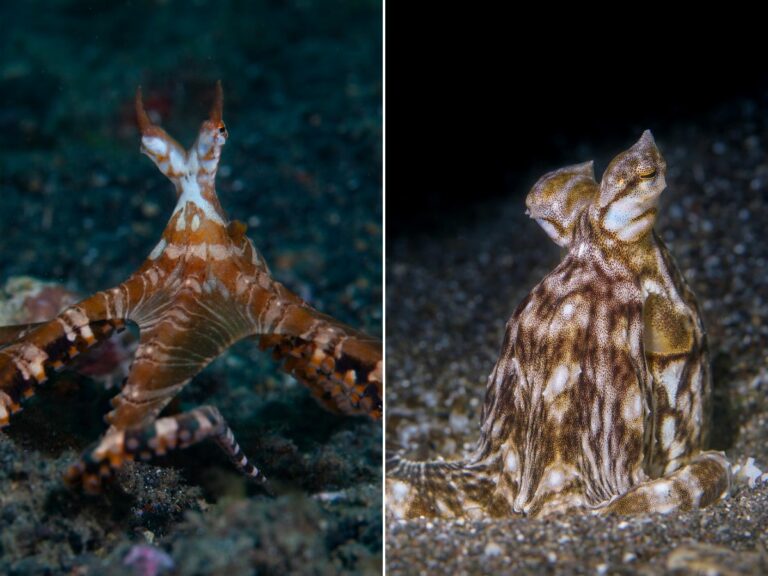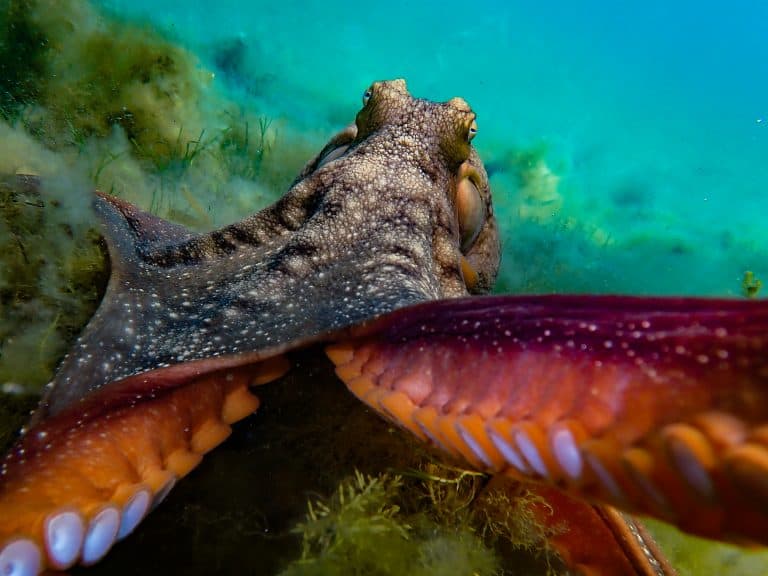Cuttlefish Quidditch: Learn About Cuttlefish Migration!
Cuttlefish have long turned their tentacles up to group swims preferring to navigate the ocean in solitude and only coming together when it’s time to mate. At least, that’s what they lead us to believe! They don’t mind traveling together and doing it in style, swimming in almost precision formations. They’re basically an underwater quidditch team swimming around on their cuttlebone “broomsticks” with their undulating fin fringes looking like capes flapping in the currents! Let’s take a deep dive and learn more about cuttlefish migration.

Animal migrations are a phenomenon of natural wonder. A massive group of one animal species getting together and moving from one place to another.
On land, around 1.3 million wildebeests travel thousands of kilometers as they follow the rains around the Serengeti. Butterflies, geese, and hummingbirds migrate annually following warmer weather in the skies. In the ocean, humpback whales travel upwards of 9,600 km (5,000 miles) between feeding grounds and winter mating and calving areas.
What about our dear cephalopods? Are they migrators?
It depends on who we are talking about!
Generally, shallow water octopuses like to park it in one spot, laying claim to a small portion of the reef as their domain. Some species, like the Giant Pacific Octopus, will move into deeper waters if water temperatures get too high where they are (they prefer chilly water).

Let’s not forget about some of our deep-sea octopus species who partake in the world’s largest vertical migration happening in the oceans every night. During the night, the Blanket Octopus will move closer to the surface in search of food, slinking back into the inky abyss when sunrise comes.
To the very best of my knowledge, no one has observed large groups of octopus moving together throughout the ocean!

Squids are the movers and shakers of the cephalopod world!
Water temperatures are the driving force for squid to get going. They get together in the thousands, moving inshore where they mate and lay their eggs. It’s quite an event when squid come together and not just for the squid.
Squid fisheries take advantage of these large groups. It’s a bucket list experience for many divers and underwater photographers to be surrounded by thousands of mating squid.

What about our beloved cuttlefish?
Thought to only come together for mating but otherwise enjoy their solitary time like most octopuses. For example, the Giant Australian Cuttlefish spend most of their time alone but gather in the thousands from May to August in a shallow reef off the coast of Australia.
Is it for the world’s largest cephalopod music festival? Not quite. They come together yearly to mate and lay their eggs. Then, sadly, they pass away, having completed their life goal: passing genetic information to their offspring.

It turns out cuttlefish also enjoy traveling together!
Scientists have observed different species of cuttlefish hanging out in small groups in the waters of the U.K., Japan, and India.
In the warm, tropical waters off the coast of Okinawa, Japan, researchers discovered clusters of Broadclub Cuttlefish (Sepia latimanus) exhibiting classic schooling behavior.
Cuttlefish of similar sizes got together in groups of 2-9 and formed swimming lines or clusters. They even kept an equal distance from one another, faced the same direction, AND synchronized their moments.
Interestingly, when groups grew larger, some cuttlefish would face opposite directions and larger ones would lead the pack followed by smaller ones.
Do you think they do a cuttle huddle before swimming together, looking like a well-organized sports team? Do they practice beforehand to show the ocean they are the earth’s greatest synchronized swim team?

Observations from the U.K. made by scientists between 2013 and 2020 support the cuttlefish migration observations made in Japan! They collected video footage of European Cuttlefish (Sepia officinalis) in groups as big as 30 traveling together in formation. They would form these groups to migrate from their shallow nursery grounds towards deeper waters in the English Channel.
Why group together?
Group living is common amongst most animals. Being in a collective increases opportunity to find food. It also helps protect and defend against predators, and of course, most animals must have at least some contact when it comes time to mate.
This goes for humans as well! Who doesn’t love someone else getting the groceries and making dinner while you sit back and watch My Octopus Teacher for the umpteenth time!?

Safety in numbers!
Cuttlefish deciding to team up to traverse great swaths of the ocean are most likely doing this for selfish reasons: to stay safe. Probably better to bring friends along when you’re a tasty little protein morsel and you’re headed into vast expanses of the unknown.
In Japan and the U.K., observations of some Cuttlefish facing a different direction than the rest of the group led scientists to hypothesize they were acting as a lookout guard. The European Cuttlefish even made themselves into a circle with everyone facing outward in all directions.
No chance they won’t see a predator coming in that formation!
Now, we need a cool name for cuttlefish migration!
A fever of rays, a smack of jellyfish, a romp of otters, a cast of crabs…even squid have a group name generally referred to as a squad, school, or shoal. All we are missing now is a fun name for a group of cuttlefish!
A scuttle of cuttle? A cuttle puddle? A concealment of cuttlefish? Considering we now have proof cuttlefish are not as antisocial as we once thought, it’s high time they get a snazzy group name.
Drop your suggestions down below!

If you want to educate yourself some more about all sorts of different cephalopods, take a look at our encyclopedia. Or, what we call it, our Octopedia!
Connect with other octopus lovers via the OctoNation Facebook group, OctopusFanClub.com! Make sure to follow us on Facebook and Instagram to keep up to date with the conservation, education, and ongoing research of cephalopods.
More Posts To Read:
- Do Octopus Bite?
- Does Octlantis Exist?
- “How The Octopus Lost Its Shell” (Octopus Comic)
- What’s The Difference Between Cuttlefish vs. Octopus?
- Breaking News – There are now THREE new species of Nautilus!

Corinne is a biologist with 10 years of experience in the fields of marine and wildlife biology. She has a Master’s degree in marine science from the University of Auckland and throughout her career has worked on multiple international marine conservation projects as an environmental consultant. She is an avid scuba diver, underwater photographer, and loves to share random facts about sea creatures with anyone who will listen. Based in Japan, Corinne currently works in medical research and scientific freelance writing!






